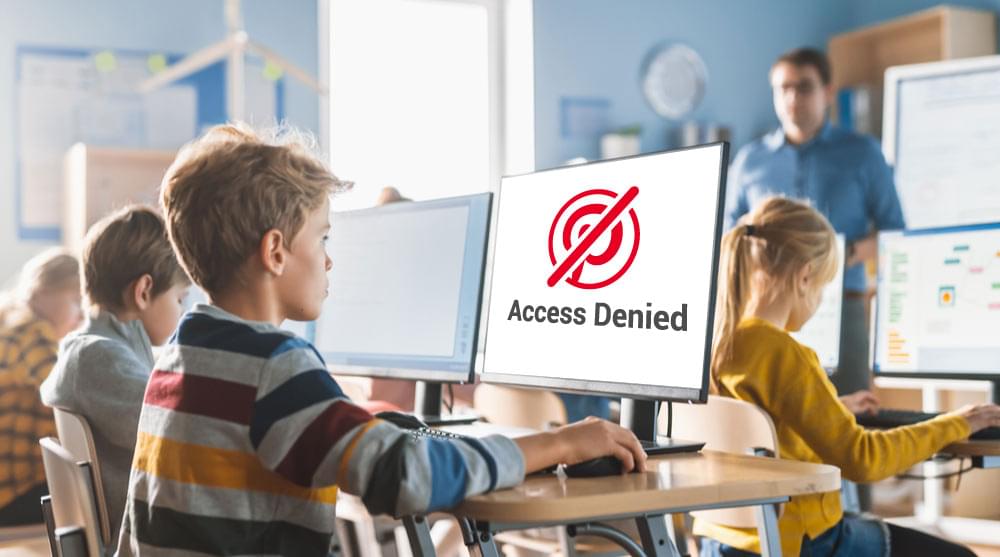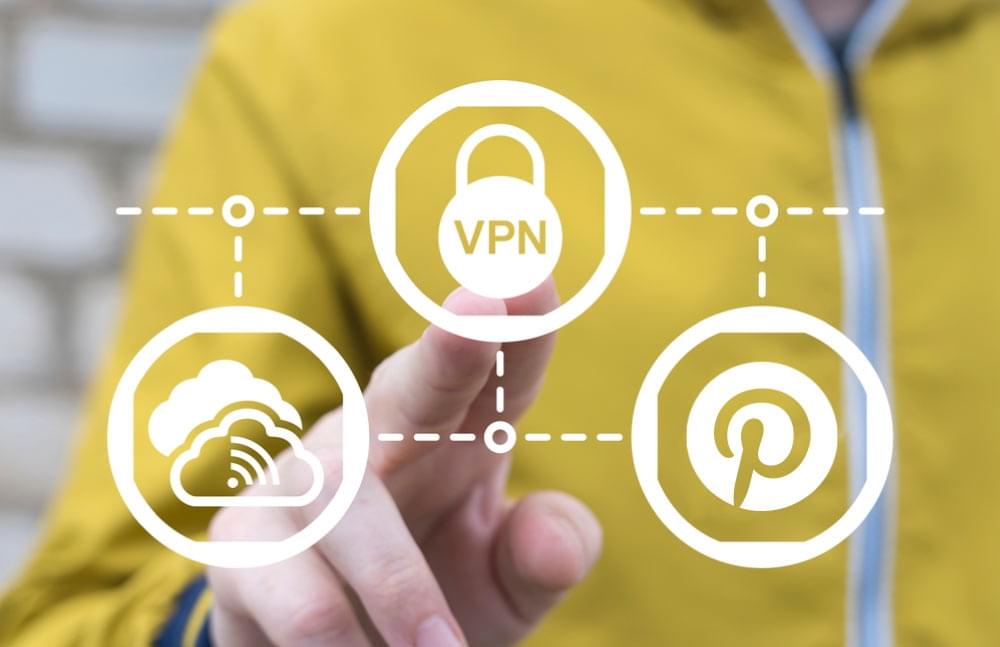How to unblock Pinterest at school: Easy & fast bypass tricks
Over 50 million students worldwide use Chromebooks at school, and most of them face strict content filtering rules.
Pinterest ranks among the most blocked websites on school networks. Schools actively restrict access to Pinterest and similar platforms to improve student focus, control bandwidth usage, and meet CIPA regulations.
Students who need Pinterest access for legitimate school projects or research can try several safe ways to unblock it. The quickest ways include using VPN services or simple browser-based solutions that work to bypass school restrictions.
These proven methods will help you access Pinterest responsibly while respecting your school’s policies.
Why is Pinterest blocked on school computers
Schools block Pinterest for good reasons, from worries about content to limits in technology. These restrictions help us find the right ways to get Pinterest unblocked at school.
Pinterest’s old content policies worried many schools. The platform let users share almost any visual content, whatever its suitability. Students could access offensive, violent, or inappropriate material that had no place in schools because the platform didn’t monitor content strictly enough.
The Children’s Internet Protection Act (CIPA) shapes these rules. Schools must block content that could harm minors according to this federal law. So many schools choose to block Pinterest completely instead of trying to filter individual images or boards.
Pinterest’s huge user base of 522 million monthly active users makes content monitoring tough. The platform lacks proper parental controls and lets users send direct messages, a feature approximately 60% of online predators use to find victims. Private boards give students places to hide questionable activities from teachers and parents.
Pinterest has great educational resources despite these issues. School psychologists and teachers like the platform because it gives free access to information when peer-reviewed journals and research resources cost too much. One educational researcher said, “People have gotten really excited about online technologies because they provide a way to get information that doesn’t require you to pay”.
These blocking reasons explain why your school limits Pinterest access and help you choose the best unblocking methods for your needs. Understanding these concerns helps you make smart choices when trying to use Pinterest on school networks.

How school blocks work: Filters, firewalls, and devices
School filtering systems are complex barriers that stop you from accessing Pinterest. These sophisticated systems create digital boundaries that students find hard to get around.
Schools use three main types of content filtering to block Pinterest and other similar sites:
- DNS filtering stops your device from finding Pinterest’s IP address
- Browser-based filtering watches and blocks content through web browser settings
- Firewall filtering builds a security wall between school networks and the internet
The Children’s Internet Protection Act (CIPA) requires schools to filter internet content. Schools can choose how they want to implement these filters. This gives them freedom to customize their blocking approach based on what they need.
Next-Generation Firewalls (NGFW) are the most advanced protection tools schools use today. These systems do more than just block websites. They add multiple security layers. They act as strong walls between safe networks (school systems) and unsafe ones (open internet). The system spots and blocks threats automatically.
Different schools use different levels of filtering technology. Some just block specific websites. Others use AI-powered filters that can spot and group suspicious content automatically. These smart systems recognize Pinterest’s features, not just its web address. This makes simple workarounds harder to use.
Use a VPNs to get Pinterest unblocked at school
VPNs are one of the best ways to access Pinterest when school networks block it. These tools work better than simple proxies because they create an encrypted tunnel between your device and the internet. School network administrators can’t see what you’re doing online.
VPNs work in a simple way - they send your internet traffic through servers outside your school’s network. This process masks your actual IP address and encrypts your data. Your browsing appears to come from somewhere else. The school’s firewall sees you connecting to the VPN server instead of Pinterest and lets the connection through.
VPNs encrypt your internet traffic to get past web-filtering software. School administrators can’t monitor what you do online. Your data goes through external servers, so you can see content that schools usually block. Many VPNs are great at unblocking sites like Pinterest and keep speeds fast enough for image-heavy platforms.
Note that using VPNs on school networks might go against your school’s rules. VPNs are legal, but using them to get around school security could get you in trouble depending on your school’s specific policies. Make sure you know your school’s network rules before trying to bypass any restrictions.

Bypass tricks without VPN
You can access Pinterest without installing extra software. Several ways exist to bypass school restrictions when VPNs aren’t available.
Use proxy websites like Hide.me or KProxy
Proxy websites act as middlemen between your device and Pinterest. These services mask your browsing activity from school network filters by routing your connection through their servers. This lets you access blocked content without being detected.
Hide.me stands out from other proxy options because of its strong encryption, speed, and user anonymity features. The service gives you multiple server locations and helps you access Pinterest quickly with minimal delays. Its easy-to-use design makes it perfect for students who need to unblock educational resources.
KProxy comes with free and premium options that work right in your browser without installing software. This makes it perfect for school computers where you can’t download programs. The free version runs at good speeds, while the premium version connects faster and removes time limits.
ProxySite, CroxyProxy, and Proxyium are other reliable options that offer secure connections to bypass school firewalls.
Switch to mobile data or personal hotspot
The quickest solution is to disconnect from school Wi-Fi and use your mobile data. This method gives you direct access to Pinterest, as long as your cell phone plan isn’t restricted.
Your phone can work as a personal hotspot by:
- Finding “Hotspot” or “Tethering” in your phone’s settings
- Creating a secure password
- Connecting your school computer to this network
- Browsing Pinterest freely without restrictions
Note that Pinterest’s image-heavy content can use up your data allowance quickly.
Try Google Translate or Wayback Machine
Google Translate can work as a simple proxy to unblock Pinterest. This trick works because Google’s servers fetch websites on your behalf.
Google Translate works this way:
- Go to translate.google.com
- Pick two languages you know (e.g., English to Spanish)
- Put
https://www.pinterest.comin the translation box - Click the translated link to access Pinterest
The Wayback Machine (archive.org) offers another option if you need specific Pinterest content. This archive keeps copies of billions of webpages, including Pinterest boards. Just type the Pinterest URL in the search bar and click “Browse History” to see archived versions.
Use URL shorteners to bypass filters
Basic school filters can sometimes be bypassed using URL shorteners like Bitly, TinyURL, or ls.gd. These services create shorter links with different domains that basic blocking systems might miss.
The steps are simple:
- Visit a URL shortener like Bitly
- Type in your Pinterest URL
- Use the shortened link in your browser
This method works best against simple website blockers that only look for specific URLs instead of analyzing how you browse.
Note that these methods might go against your school’s internet rules, even though they help you access Pinterest for education. Make sure to use these techniques responsibly and mainly for schoolwork.
How to get Pinterest unblocked on restricted devices
Bypassing device-level restrictions needs specialized techniques that go beyond network bypassing methods. School-managed devices use extra security layers which require different approaches to access Pinterest.
How to unblock Pinterest on Chromebooks
School Chromebooks block Pinterest through device-level restrictions. You can bypass these limitations by adjusting your device’s certificate settings. Start by opening your browser and going to the privacy and security settings. Look for the “security” option and click it. The advanced section contains “manage device certificates” - select this option. Make sure “client authentication” is checked when you scroll down to the advanced settings. Your Chromebook will authenticate differently with websites after this adjustment, which often allows Pinterest access.
DNS settings changes to services like Google DNS (8.8.8.8) or Cloudflare DNS (1.1.1.1) can help you get around simple filtering. These modified settings help maintain Pinterest access even when school IT departments update their restrictions.
Unblocking Pinterest on iPads with MDM
MDM-managed iPads create unique challenges. The system lets administrators “prevent installation of apps directly from the web” and turn off the App Store completely. Most school restrictions focus on network filtering, but MDM controls the device itself.
Tools like 4uKey help you bypass certain MDM restrictions while keeping your device secure. You’ll need to connect your iPad to a computer, run the MDM bypass software, and follow the on-screen instructions. Your iPad’s cellular capability can help you temporarily switch to mobile data to get around device-level restrictions.
Browser-based tricks for school computers
Browser settings changes work well when other methods don’t succeed. Start by enabling third-party cookies in your browser settings. The next step is to adjust your security settings to allow more content types. These simple changes can help you bypass simple filtering systems on school computers.
Browser extensions offer another effective approach. Privacy-focused extensions route your traffic through different paths. These extensions work like VPNs but stay within the browser environment, making them harder to detect on restricted devices.
Conclusion
Students need to think over both technical solutions and school rules to access Pinterest at school. Schools block Pinterest to keep students safe and productive, but teachers and students sometimes need the platform’s valuable resources for education.
You can safely bypass school restrictions in several ways. VPNs are the quickest way to get around blocks. Proxy websites and browser tricks work great when you can’t install a VPN. School-managed Chromebooks and iPads need their own specific solutions to work around restrictions.
Being responsible is crucial when you try to access blocked content. Students should use these methods only for schoolwork and follow their school’s internet usage rules. These techniques let you access Pinterest’s educational content while you retain control of proper online behavior at school.
Your approach needs updates as your school’s filtering systems change. The basic steps to access Pinterest for academic work stay the same, but you should keep track of the latest security measures.
FAQs
How can I access Pinterest at school without using a VPN?
There are several methods to access Pinterest without a VPN, including using proxy websites like Hide.me or KProxy, switching to mobile data or a personal hotspot, using Google Translate as a proxy, or trying URL shorteners to bypass filters. However, always use these methods responsibly and in line with your school’s policies.
Can I unblock Pinterest on a school-issued Chromebook?
Unblocking Pinterest on a school Chromebook can be challenging due to device-level restrictions. Some methods include adjusting certificate settings, changing DNS settings, or using browser-based tricks. However, be aware that these actions may violate school policies and could be detected by IT administrators.
Are there any risks in trying to access blocked websites at school?
Yes, there are risks involved. Attempting to bypass school network restrictions may violate acceptable use policies and could result in disciplinary action. Additionally, school IT departments can often monitor and log internet activity, even when using methods to circumvent blocks.

